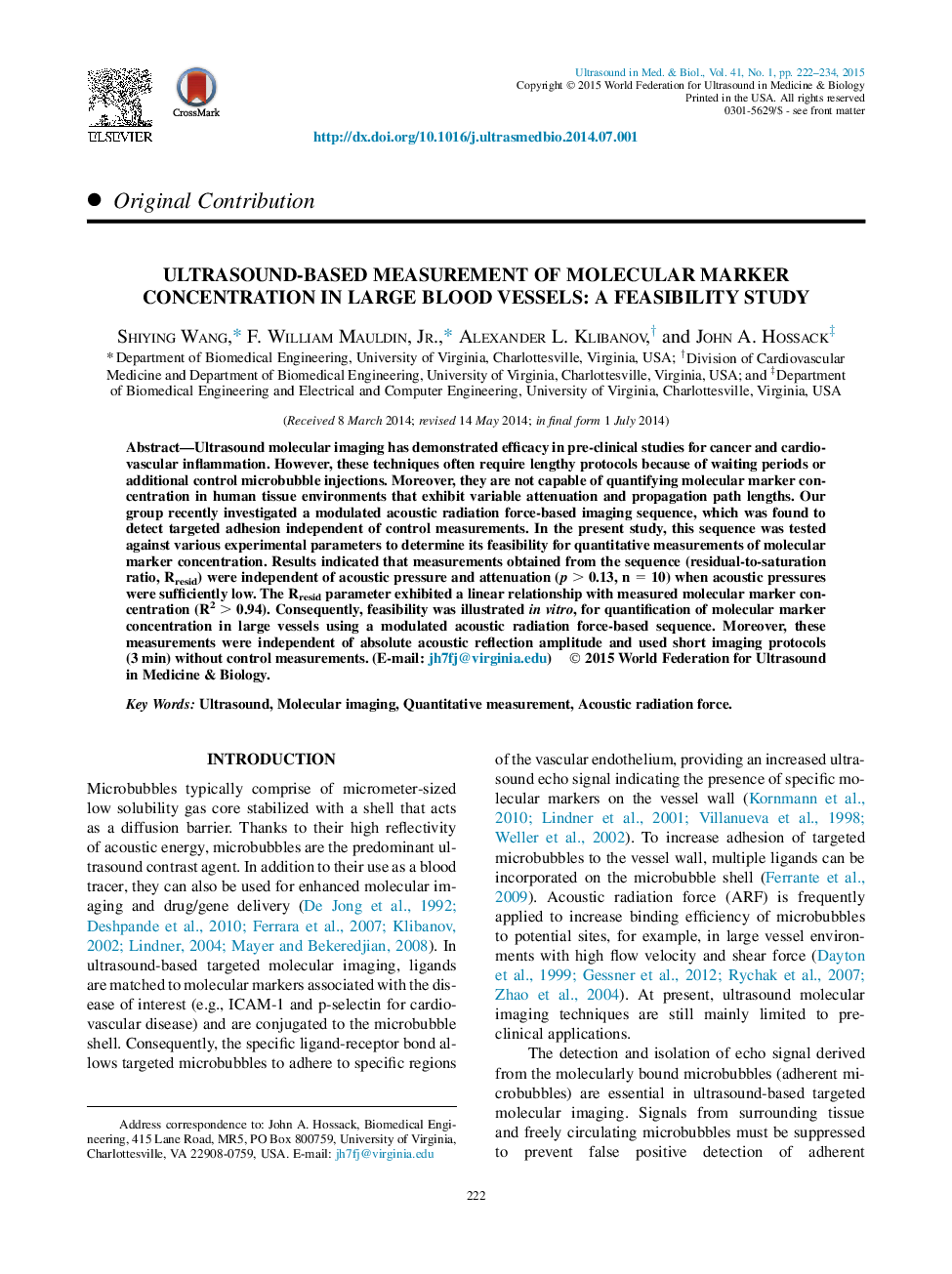| Article ID | Journal | Published Year | Pages | File Type |
|---|---|---|---|---|
| 1760425 | Ultrasound in Medicine & Biology | 2015 | 13 Pages |
Abstract
Ultrasound molecular imaging has demonstrated efficacy in pre-clinical studies for cancer and cardiovascular inflammation. However, these techniques often require lengthy protocols because of waiting periods or additional control microbubble injections. Moreover, they are not capable of quantifying molecular marker concentration in human tissue environments that exhibit variable attenuation and propagation path lengths. Our group recently investigated a modulated acoustic radiation force-based imaging sequence, which was found to detect targeted adhesion independent of control measurements. In the present study, this sequence was tested against various experimental parameters to determine its feasibility for quantitative measurements of molecular marker concentration. Results indicated that measurements obtained from the sequence (residual-to-saturation ratio, Rresid) were independent of acoustic pressure and attenuation (p > 0.13, n = 10) when acoustic pressures were sufficiently low. The Rresid parameter exhibited a linear relationship with measured molecular marker concentration (R2 > 0.94). Consequently, feasibility was illustrated in vitro, for quantification of molecular marker concentration in large vessels using a modulated acoustic radiation force-based sequence. Moreover, these measurements were independent of absolute acoustic reflection amplitude and used short imaging protocols (3 min) without control measurements.
Related Topics
Physical Sciences and Engineering
Physics and Astronomy
Acoustics and Ultrasonics
Authors
Shiying Wang, F. William Jr., Alexander L. Klibanov, John A. Hossack,
